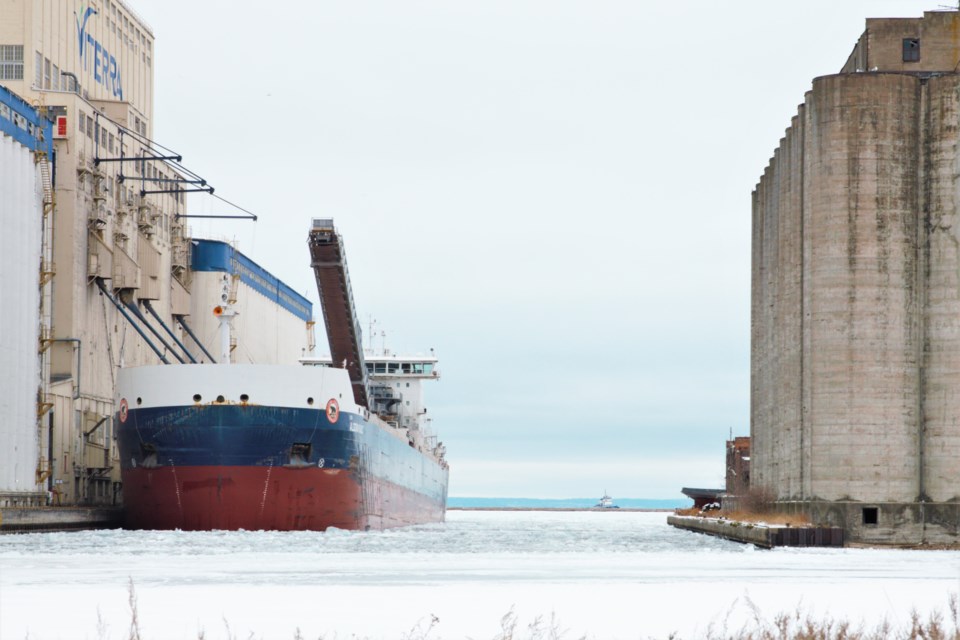THUNDER BAY — The Prairie provinces experienced their third-largest grain crop in history last year, yet despite this volume, there wasn’t expected to be enough shipments to catch up at the Thunder Bay port from shipments lost at the beginning of 2022.
“Grain is the biggest commodity that we ship,” said Chris Heikkinen, in his new position as director of business development and terminal operation at the Port of Thunder Bay.
“Grain was down compared to average because of the poor crop on the Prairies in 2021. The first seven or eight months of the season, we saw lower grain values and that was expected . . . but the grain is certainly moving now. This (2022) crop started moving in September and the numbers are certainly coming on strong in October, November and December. But we still won’t match (2021’s) level because there’s not enough time to make up the ground that was lost earlier in the season.”
The Russian and Ukrainian war has made a substantial impact on the port but not necessarily in a negative way.
Sanctions placed on Belarus and Russian potash by many countries around the world resulted in them having to source their product from alternative markets.
“As a result, we’re moving a lot more Saskatchewan potash east into the seaway system to Europe and South America . . . which would have previously sourced their potash from Russia or Belarus,” Heikkinen said. “(In 2021), we shipped just over 600,000 tonnes of potash — and that was a high value — but (in 2022) we shipped 1.2 million tonnes.”
He says the port also saw strong imports of steel from Europe in 2022, all of which is heading to the Prairies by rail.
“It’s mostly steel pipe, steel rail and structural steel,” he said. “We’ve been shipping steel west for about six shipping seasons now and every year the volume increases.”
The steady regime of steel, wind turbine products, and other project cargo such as heavy-lift items for the mining sector became familiar arrivals at Keefer Terminal last year.
Heikkinen explained the importance of matching incoming cargo imports with export shipments of grain and products.
“We have ships that not only come in and load with grain, but ideally they come in with something to deliver,” he said. “That’s our main objective really in the whole game of things to try to get more inbound cargo to match with the outbound cargo.” He added that there are many efficiencies in the system connecting offloading ships to reload and leave with a different commodity.
Overall, Heikkinen says the level of the products coming through the port was beyond what they could have anticipated.
Heikkinen says there are a couple of “big” projects planned for the port in 2023 which involve infrastructure-renewal projects that are necessary to expand the port’s capacity to handle cargo.
“We’re also looking at stronger grain shipments (this year) that will bring us back to more of a normal level and possibly a bit above average with those stronger grain crops this year. Potash is most likely going to remain above average,” he said, adding it’ll take a while for it to level off even if there is a resolution to the conflict.
He said they are expecting pipe and other steel imports at Keefer to look good again this year and are looking at a number of shipments of inbound fertilizer.
“We just had 20,000 tonnes of fertilizer from Morocco come through (last) year, and we’re probably going to be looking at more like 60,000 tonnes (this) year,” Heikkinen said.
The Chronicle-Journal/Local Journalism Initiative
